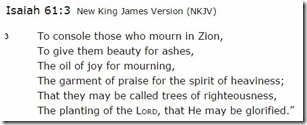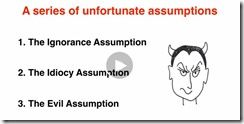Some folks do not like to read posts of a more personal nature or posts that contain religious references. If you are one of those people, you have been forewarned.
I’ve read lots of posts from people who are ready for 2016 to be over. I understand their reasons. Celebrities, friends, and family have passed away this year. The world economy stumbled through another four quarters. About 51% of US voters were disappointed by results of the 2016 US Presidential Election (which are still being updated at the time of this writing, by the way).
I learned some things in 2016 and would like to join the chorus of sharing as 2016 draws to a close.
New Businesses
In 2015 I left Linchpin People and founded Andy Leonard Consulting. Shortly thereafter I was having lunch with my friend Nick who said, “‘Andy Leonard Consulting’ sounds like a one-person operation.” “There’s a very good reason for that,” I replied. Before we finished lunch, Nick and I agreed to work together on a new venture called Enterprise Data & Analytics, or EDNA. EDNA officially launched in January 2016.
I kept Andy Leonard Consulting around and repurposed it as a software development company. ALC built and manages the Data Integration Lifecycle Management Suite (or DILM Suite), a collection of mostly-free utilities that facilitate my vision of enterprise data integration DevOps and Continuous Integration (CI) for SSIS.
If you’re playing along at home, I operate two businesses: Andy Leonard Consulting (ALC) and Enterprise Data & Analytics (EDNA). ALC has “consulting” in the name but does software, not consulting. EDNA does consulting. Confused? Me too…
Lesson: Entropy happens. Without an anchor you’ll either drift – or be blown – away. My anchor is faith in Christ. I’m reminded of Isaiah 61:3 that states God gives “beauty for ashes.” Some translations render this passage “God makes beauty from ashes.” A chunk of my life burned down in 2015. I am astounded at, overwhelmed by, and thankful for what God is making from these ashes.
Becoming a Better Listener
I started listening to audio books in 2016. I have listened to audio books in the past, but I focused on listening to them in 2016. I like Audible for a number of reasons:
-
I pay ~$15/month and get 1 credit that can be used to access one book.
-
I can accumulate 6 credits over 6 months if I do not use them, so if I go through a period of not accessing audio books I don’t start losing credits until the seventh month.
-
Audible’s cloud integration means I can listen on my laptop or phone, picking up right where I left off on the other device.
My taste in audio books is different from my taste in books I read. I’ve tried to listen to books for entertainment but I cannot enjoy them. I don’t know why this is so. I enjoy listening to audio books about theology and business. While I enjoy reading books about theology and business and science fiction, I’ve mostly shifted to reading sci-fi and listening to theology and business books.
I prefer audio books read by the authors. Why? To me, they’re more… real. The author knows where to inflect for emphasis. Sometimes the author will throw “extras” into the audio book that are not in the written edition. The best business book I heard in 2016 is an example: Grant Cardone injected dozens of thoughts into the audio book The 10X Rule that did not appear in the print version. All of them are great and some of them are hilarious! 10X is a book about success. I confess some confirmation bias in recommending this book; I’ve long believed and stated that there’s no substitute for hard work. I assigned this book to my older son, Stevie Ray, as a homeschool reading assignment. That’s how much I liked it.
My friend and brother Frank La Vigne (blog | @tableteer) recommended this book – thanks Frank!
Listening to audio books like 10X has improved my listening skills. It turns out that listening to the words that people who live with you and work with you are saying and writing to you is a good idea (who knew?). Listening is an especially good idea for me because I am a hard-headed and triflin’ redneck (Can I get an amen?). I mentioned confirmation bias earlier because I’m more guilty of it than most. Kathryn Schulz’ TED Talk On Being Wrong – and the book – smacked me upside the head. The TED Talk is just under 18 minutes. I encourage you to invest 18 minutes listening to her. She’s brilliant. Will it help if I link to her TED Talk again?
Lesson: Listen. Listen more and listen well.
There’s More to Learn
I’m going to confess something. I’m going to be vulnerable (another great TED Talk by Dr. Brene Brown – 20 minutes – we’re up to 38 minutes of assigned TED Talks now…). SSIS Catalog Compare is the first product I’ve written. It’s also the first full application I’ve attempted writing in C#. I’ve been writing software since 1975 so I am familiar with the practice of developing code. Although I’ve built applications in the past, I’ve never built a soup-to-nuts product and I’ve never used C# to do so; I’ve only used C# to build code snippets.
Catalog Compare grew out of an epiphany while attempting to write a GUI to manage an SSIS Framework. An SSIS Framework can simplify your enterprise data integration. You can start the execution of a collection of SSIS packages with a single command. Awesome, right? What’s not to love? Well… there’s no free lunch. In order to accomplish this magic, an SSIS Framework relies upon a boat load of metadata. SSIS execution, whether or not one uses a Framework, also relies on even more metadata stored in the SSIS Catalog. I was building this interface to manage Framework metadata when I realized there’s no easy way to manage most of the metadata stored in the SSIS Catalog.
So I wrote an app for that. In C#.
Why? I found a problem that I wanted to solve. And I wanted to learn C# – really learn it. So what did I do? I committed to building SSIS Catalog Compare in C#. I knew I would need help. Fortunately for me, I’m surrounded by awesome friends who are literally masters of software development and C#. Two friends in particular, Scott Currie (owner of Varigence, inventor of Biml, all-around nice guy) and Kevin Hazzard (blog | @KevinHazzard), listened to me and suggested improvements and next steps without laughing (to my face) at my code. With their help and help from Google and Pluralsight, I learned more C# in 2016 – enough to release SSIS Catalog Compare in August.
Thank you, Scott and Kevin.
Lesson: Keep learning.
Post-note: As I type this, SSIS Catalog Compare v2 is nearing release. There’s a free “view-only” utility based on Catalog Compare functionality (it’s actually a subset of the Catalog Compare codebase) called SSIS Catalog Browser. After the Catalog Compare v2 release I return to developing that Framework Manager GUI I started coding in August 2015. There’s a “view-only” version of this yet-to-be-built application available today, for free. It’s called SSIS Framework Browser and it works with the SSIS Framework Community Edition which is not only free, it’s open source! </ShamelessPlug>
Conclusion
2016 was a year of lessons learned for me. I am looking forward to 2017!
Happy New Year!
*<:{>




Great post Andy! Just invested 38 minutes of my time in listening to your recommended TED talks and they have given me a lot to think about on this last day of 2016. Thank you for who you are and for all you do. And for reminding me of who is really in charge.
David, my friend and brother from another mother,
Thank you, sir. And Happy New Year!
*<:{>